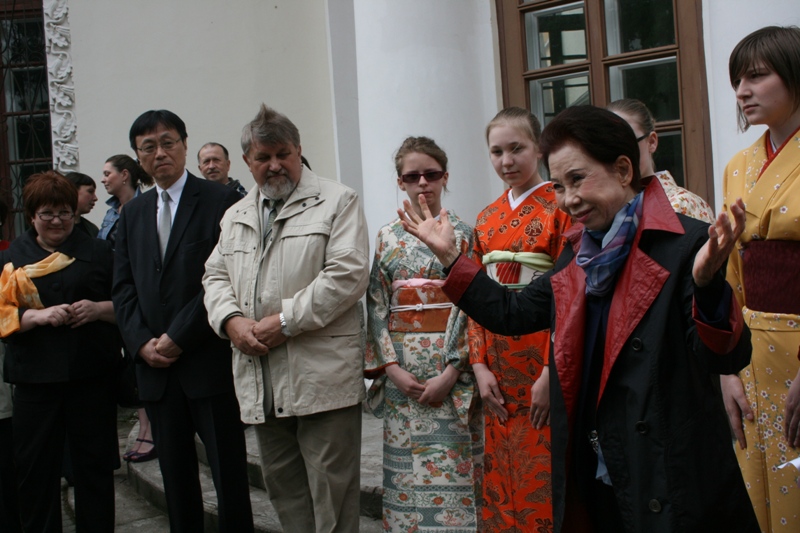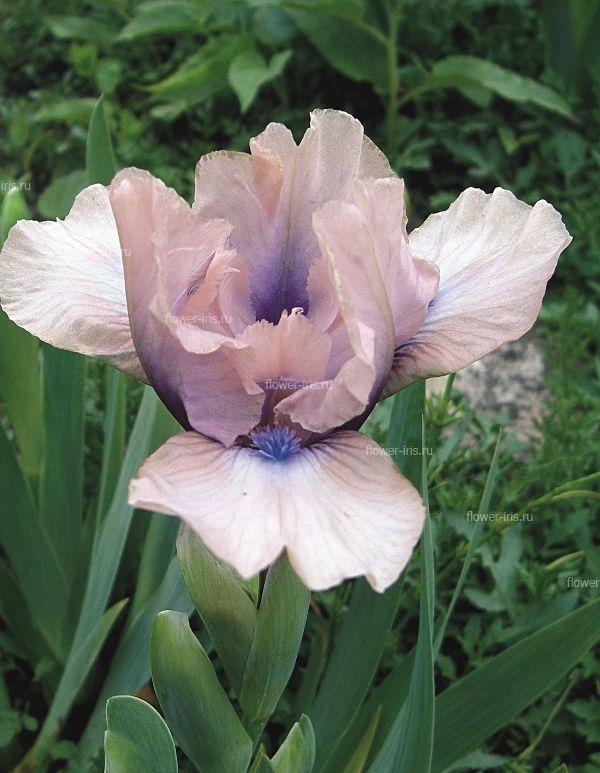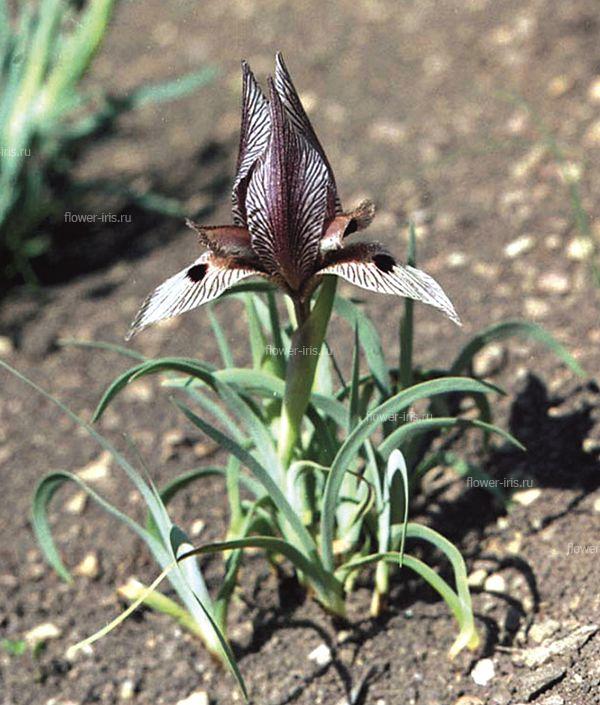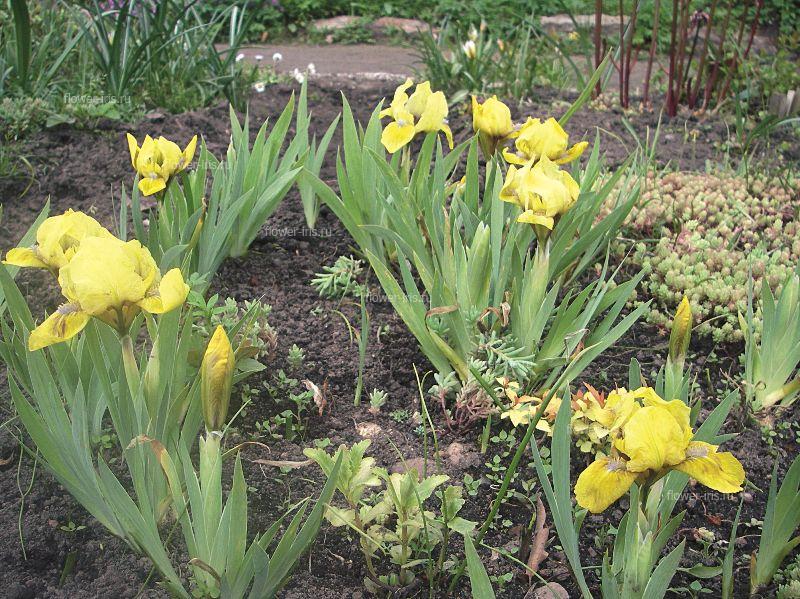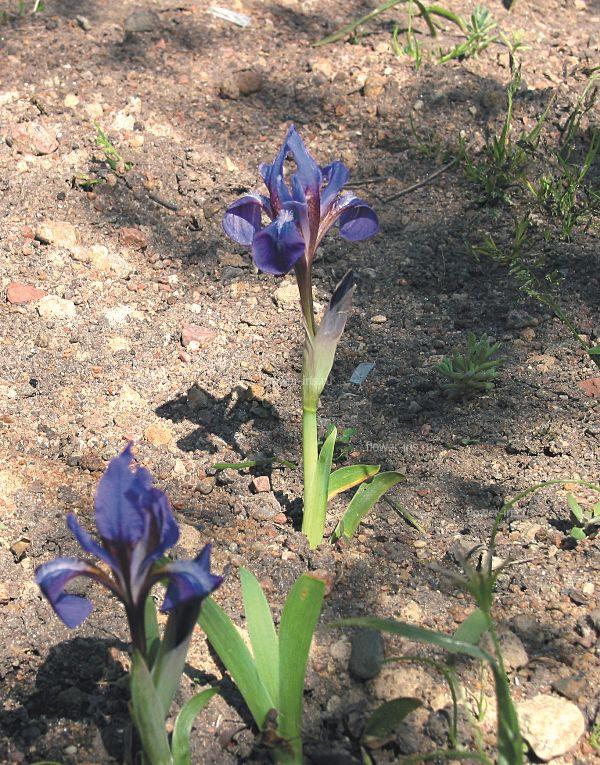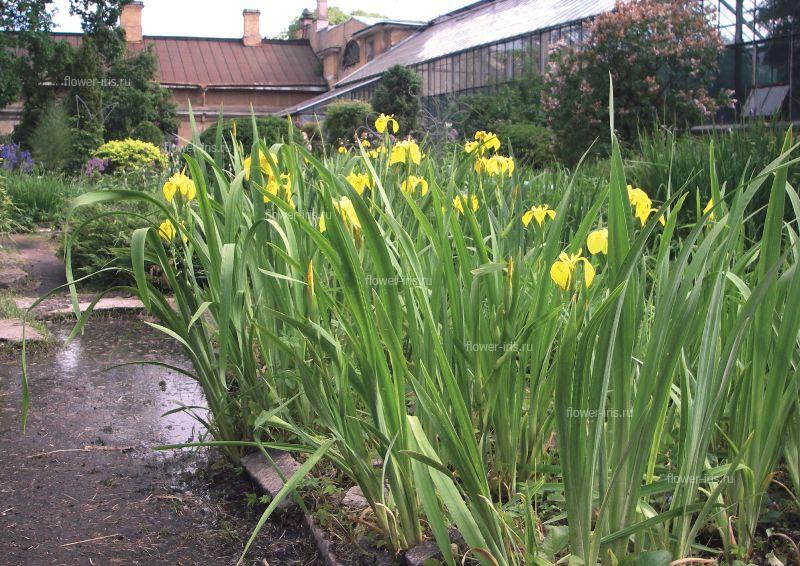|
News Photo Gallery |
Subgenus Iris (Iris) - Rainbow IrisHomepage → Books on Iridarium (Iris Garden) → Look in the book → Subgenus Iris (Iris) - Rainbow Iris
Introduction
Create iridariya Family Iridaceae Bulbotubers Bulbous Rhizomatous Genus Iris Subgenus Iris Subgenus Limniris Subgenus Eremiris Subgenus Xyridion Subgenus Tenuifolia Genus Pardanthopsis The exhibition "Iris Russia" Exposure Iris garden Cultivate Insect Pests and diseases of Irises Literature The translation is done through the service translate.google.com. Subgenus is the most complex and interesting group. The main feature is a strip of densely arranged hairs, so-called "beard", the central vein of external, internal and sometimes share the perianth. Rhizome of clearly visible annual thickening - units, slightly deeper in the soil or crawling on the surface, grow apart and forms a loose thicket. The links can be quite thick and bare, or thin, creeping, as stolons, basal leaves, wide or narrow, are a fan or a pencil. Flower large, brightly colored. Capsule leathery. Wild species are grown in Central and Eastern Europe and Asia. In Russia - in the south of European Russia and Siberia in the steppe and forest-steppe zones in part. In subgenus there are about 130 species. More than 50 species have been tested for Iridarii. Most of them are easy to learn the culture. Hardly able to engage in the culture of the species that migrated from southern dry areas in the north, to areas with cool and wet summer. For example, attempts to grow in areas of the North-West since the plant Stem (I. longiscapa) of section Psevdoregeliya (Pseudoregelia) both in closed and open field from seeds or rhizomes useha had. Types section Regel (Regelia) also suffer from the lack of heat and excess moisture. In the collection were tested because Darvaz (I. darvasica), because Korolkova (I. korolkowii), because stolononosny (I. stolonifera), since Guga (I. hoogiana). The only kind of - because Guga, great feeling on the lawn in the shade of oaks, wintered with shelter, blossomed over the years, the other species of this section fell to two-third year after planting. Types section Onkotsiklus (Oncocyclus) also difficult to grow in the North West. They are common in the mountainous regions of Central Asia, the Caucasus, Iran and the Middle East, characterized by a dry climate with a pronounced seasonality. In this section of the flowers are single, very large, inner segments larger exterior. On the outer perianth lobes - Broken beard of hairs. Rhizome of oreshkovidnyh, closely spaced together annual thickenings. The leaves are gray, narrow-linear, falcate, mostly much shorter peduncle. Box narrowed at both ends, opened the side slits. Seeds with large light prisemyannikom. All species of the section Onkotsiklyus - very ornamental plants. In the North-West of the European part of Russia require special care. Landing site should be selected sunny, with a loose, sandy, well-drained soil. During the protracted spring and autumn rains require cover. If the summer is rainy, it is better to dig the rhizome, dry and leave until September indoors, in dry sand. Planted in the fall, and during the early growing season, spring, fertilized with chemical fertilizers, winter harbor. With this managed care for 3-5 years to have flowering plants in the ground because Grossgeim (I. grossheimii), Helen K. (I. helena), since the Iberian or Georgian (I. iberica), since Medvedev (I . medwedewii), because ostrodolnogo (I. acutiloba), because paradoxical (I. paradoxa), etc. In the section about 50 species, only one is grown Iridarii obtained from Dagestan, collected in the vicinity of the city of Makhachkala - I. acutiloba C. A. Mey. - K. ostrodolny. Rhizome thick, compressed. Leaves glaucous, falcate, equal peduncle, 8-10 (15) cm. Peduncle 8-10 (15-25) cm high. Flowers with a light gray background in the grid brownish veins, 6-8 cm (vertical), with ostrolantsetnymi perianth lobes. Domestic shares b. h slightly wider appearance; turn away down the plate outer lobes with two spots: one round, purple-violet, and the other near the tip - a small, kidney-shaped, rounded, brown. Seeds are large and white, later yellowish prisemyannikom. In Russia, the only known population of this species in Dagestan - in a unique dune Sarykum have to. Kumtorkala, 12 km west of Makhachkala (Buinaksk district). Outside Russia, found in Azerbaijan, north of the River. Chickens, and in the north of Iran. Usually grows on loamy soils. In the foothills grows on hills, preferring slopes of the southern exposures in the lower mountain, on dry gravelly and rocky slopes, overlooking the foothill plains. Kumtorkalinskoy plant populations inhabiting the plotnoslezhavshihsya sands with marl. Blooms in May. Fruit in late June and early July. Section Iris (Iris), or bearded irises (The bearded or pogon irises). Section is the most complex and interesting group. Rhizome of clearly visible annual thickening - units, slightly deeper in the soil or crawling on the surface, grow apart and forms a loose thicket. The links can be quite thick and bare, basal leaves are wide. Flower large, brightly colored. In the section about 40 species. Iridarii been tested on more than 20 species. Now in the collection of 10 species are grown. All of them are very decorative, good in group plantings and singly, suitable for rocky hills and for cutting. Most species of this subgenus are the ancestors of horticultural varieties of bearded irises. They went a long process of selection. Learn more about this question in the chapter "The exhibition of garden irises" Irises as an object for selection. '" I. alberti Regel - K. Albert. Shirokomechevidnye leaves, 35-65 cm long., 25-30 mm wide., At the base of the purple-violet. Stems 40-70 cm long., On top of korotkovetvisty. The flowers are large, violet-purple. Capsule cylindrical, without noticeable edges. Seeds are dark brown. Central Asian appearance. Distributed in the Tien Shan. In the foothills of Trans-Ili Alatau, Alai and Fergana ranges comes at the height of 1700-2000 m above sea level. m and above. Endemic. Flowers in May and early June, fruiting in August. I. aphylla L. - K. leafless. The leaves are 25-40 cm long., 15-30 mm wide., With sword-shaped plates on the upper third extended. Stems branching from the base, 3 -, 5-flowered, is the length of the sheet. The flowers are 6-7 cm in diameter., Bright purple, with a beard, often with flavor. Capsule cylindrical, both ends gradually narrowed. Seeds are dark brown. European look. Widely distributed in the European part of Russia: Volga-Don region, the Volga. Outside of Russia - Central and Eastern Europe. Mainly grows in thickets, forest edges, forest clearings, on loamy or rocky soils. The leaves fall off completely for the winter, spring comes later peduncles. Hence the name of the form - leafless. Flowers in May and early June, fruiting in late August and early senyabrya. I. furcata Bieb. - K. fork. Leaves are green, ensiform, straight, 25-40 cm long., 8-10 (15) mm wide. Peduncle slender, graceful, branching, not usually at the base and at the top, there are plants with single-flowered peduncles. The flowers are 3-4 cm long., Thickly painted in purple and red colors, with a beard on the outer perianth lobes. Capsule small, 3-4 cm long., Obtuse at the apex. Seeds are dark brown. Caucasian species represented numerous populations small northern fragment habitat in the Russian North Caucasus. Grows in the foothills on the slopes of varying exposure, light and moisture of the soil. In dry, open sun mountain terraces, on the grassy slopes, in the forest zone up to 2200 m flowers in May and early June. Fruit in late July-early August. I. germanica L. - K. German. Shirokomechevidnye leaves, glaucous - 35-40 (50) cm., 20-30 mm wide. Stems branched, is equal to or longer than leaves - 40-100 cm long. The flowers are large, bluish-purple, with a strong pleasant aroma, with yellowish or pale blue beard. Capsule oblong-oval. Seeds dark brown, melkomorschinistye. Described from Germany in the XIX century. the cultural pattern. In nature, rare. ZT Artyushenko found in Transcarpathia, in the vicinity of Vinogradovo, on Black Mountain. Flowers in June, fruits in August. I. glaucescens Bunge - K. bluish. Leaves falcate, glaucous - 5-15 cm long., 8-10 mm wide. Peduncle usually shorter, sometimes equal to or longer than the leaves, a number of forms - up to 30-35 cm long. The flowers of lilac-purple to pale purple, sometimes - white, with dark purple veins on the outer perianth lobes beard - of white hairs. Spindle-shaped box. Seeds dark brown, wrinkled. Species is represented by numerous populations occurring in Russia at the border area. In Russia, rising in the south of Western Siberia. Outside of Russia - Central Asia (Kazakhstan), Mongolia (north-west), China (north-west). Grows in the sagebrush-bunch-grass steppes, alkaline sands, dry rocky and gravelly slopes. Blooms in late April and May. Fruit in July and August. I. imbricata Lindl. - K. imbricate. Close to Albert K. (I. alberti). Differs in the sulfur-yellow color of the flowers and broader leaves. It occurs in damp mountain meadows, with adequate moisture (flow humidification) kamenistnyh slopes, often on steep banks of mountain rivers in the south-eastern parts of the Caucasus, in northern Iran, at an altitude of 800-2000 m above sea level. m flowers in May. Fruit in late July. I. pallida Lam. - K. pale. Since close to the German (I. germanica). By the absence on peduncle developed branches, pale blue, cobalt flower color, dark-blue-gray leaves. It grows on the north-western slopes of the Alps. Blooms in June. Fruiting in August. I. pumila L. - K. dwarf. Leaves are slightly glaucous, 8-12 (15) cm. Above stalk and wide-or narrow-linear, 5-8 (15) mm wide. Peduncle up to 15 cm long. Flowers are large, 5-7 cm in diameter., Color varies from greenish yellow to dark-blue, come across a plant with white flowers. Capsule thin-walled, inflated, tapering at both ends, on top of a mature capsule - a thin rod of dried perianth (specific topic). Seeds are dark brown. Widespread in our country and outside of Russia, the European-Caucasian appearance. South of the European part of Russia in the steppe and forest-steppe zones in part, the North Caucasus, Southern Ural and Ural regions. Outside Russia, the spread in the Caucasus, the Ukraine, Moldova and Kazakhstan, is found in Central and South East Europe. Predominantly steppe Geophysics, component fescue-feather grass steppes, however, many populations often come on alkaline reduction - "pods", which are components of the semi-desert vegetation. Blooms in late May and early June. Fruits in July. I. scariosa Willd. ex Link - K. leathery. The leaves are tough, intense gray, falcate, 10-20 cm long., 10-12 mm wide. Peduncle 5-8 (15) cm. Flowers 3.5-4.5 (5.5) cm in diameter., Pale violet, found from deep-violet to light-blue and almost white tones are very rare specimens with flowers yellowish shades. Spindle-shaped box. Seeds are dark brown. Endemic European-Caucasian (Caspian) type. The main part of the area is located in north-western and western parts of the Caspian depression (Astrakhan region., Kalmykia) and East Caucasia. The northern boundary of the reach. Elton east descends to the lower river. Volga and p. Kuma, South passes - on the Nogai steppe to western and eastern spur Ergeni Prikalausskih heights. It grows in alkaline soils on slopes, dry plateau of desert-steppe grasses, sometimes comes at the Sands. Blooms in late May. Fruit in early July. I. variegata L. - K. colored. The leaves are large-or linear-ensiform, 25-40 cm long., 15-20 mm wide., Straight or slightly falcate, with marked striation in the middle of the plate, equal to or lower than the peduncle. Peduncle 45-50 (60) cm., On top of korotkovetvisty. Flowers are large, 3-5 cm in diameter., No flavor, mostly dvukolernye: external perianth lobes with mesh reddish-brown veins, merging at the end of the plate in one common maroon spot, internal share bright or pale golden yellow . Oblong box. Seeds are light or dark brown, melkomorschinistye. It grows on dry rocky slopes, among shrubs, woodlands, forest clearings, edges of groves south warm temperate zone of Central Europe, the Balkans and the southern and south-western Moldova, Odessa region. Ukraine. Blooms in June. Fruiting in August. Section Psammiris (Psammiris). Rhizome, more or less subtle, almost round, brown, creeping stolons as extending at right angles, bulbous (forms a loose or dense tufts, naked or in the remnants of old leaves). Leaves linear, broadly or narrowly ensiform, sometimes almost sickle, the peduncle equal in length, slightly exceeding it, in a bun. The stem is simple, never branched, upright. Flowers with a beard on the outer perianth lobes, very quickly fade, but do not fall off. The first upper flower often sterile. Ovary triangular devoid furrows. Triangular box, sometimes blunt, hexagonal. Seeds with prisemyannikom. This section includes about 10 species. Most of them are found in the wild in the steppes, alpine meadows, desert and mountain areas of Asia and southern Europe. In our country, the section is represented by 6 species, growing in the mountains of Altai and Baikal, in the Primorsky Territory, and one species, C. Sand (I. arenaria), found in the woods and meadow steppe, sand and chalk slopes in the south of European Russia. Many of these sections are rare plants, they are still poorly understood in the culture and many are involved in the selection. Most of the species of interest as shortness of dwarf iris to rocky hills. K. low (I. humilis) has high cold. I. bloudowii Ledeb. - K. Bludova. Rhizome korotkopolzuchee, stolonovidnoe forming loose sod. The leaves are green, 25-30 cm long., Wide, 6-18 mm, lantsentnolineynye, falcate, at base covered webbed leafless sheaths. Peduncle is almost equal to the leaves or slightly lower. Flowers are yellow with brownish (bluish drying) veins on the stem, 15-20 cm long. Spindle-shaped box, stalked, more than 15 mm long. Seeds are dark brown. Widespread in our country, but represented by a relatively small populations in West and Central Siberia. Outside Russia, found in China, Mongolia, North-East Kazakhstan. It grows in the mountains in the lower zone of the Alpine region, the alpine meadows. Below, in a forest area - the meadows, hills, on the outskirts of forests and valleys of mountain rivers. There are populations that live in dry, sandy soils of the southern slopes (Transbaikalia). Blooms in early June. Fruit in late July-early August. I. humilis Georgi - K. low. Rhizome korotkopolzuchee, but with developing stolons form loose clumps. The leaves are bluish-green, slightly ensiform, dense, with 1-3 prominent veins, during flowering are at fruiting - long stems up to 25 cm long., 3-7 mm wide. Peduncles strong, up to 15 (20) cm. The flowers are bright yellow. External interest in the middle of the longitudinal beard of bright yellow hair and purple veins, which give bluish flowers. Capsule elliptic, tapering at both ends, with a spout. The seeds are light brown. It is widely distributed in this country and outside of Russia, belongs to the group of Asian arealogical. In Russia - in Western and Eastern Siberia. Outside of Russia - China and Mongolia. It grows on the steppes (mostly sand), often rocky slopes, in the woods, forest glades and coastal grasslands, scrublands. Blooms in June. Fruit in late July. I. kamelinii Alexeeva - K. Kamelina. Rhizome short, webbed at the base covered with leaf sheaths forming b. m loose tufts. Leaves radical in beams, blue-green, linear, 15-20 cm long., Up to 5 mm wide., At the base surrounded by membranous sheaths. Unbranched stems, short, 10-15 cm long. The flowers are solitary, terminal, yellow, with a dense network of purple veins. Capsule rounded-oval. Seeds are large, brown, with yellowish prisemyannikom. The species is distributed in this country by small populations in Siberia (Altai). Outside Russia - perhaps in Mongolia and China. Grows on gravelly steppe and rocky slopes of the mountains and their foothills. Rises to 2,500 m above sea level. m Forms turf. Blooms in early May. Fruit in late June. I. mandshurica Maxim. - K. Manchu. Rhizome korotkopolzuchee, but with developing stolons form loose clumps. The leaves are bluish-green, slightly ensiform, dense, 3-7 mm wide. during flowering are at fruiting - long stems up to 25 cm long. Peduncle up to 15 (18) cm. The flowers are bright yellow. Outer perianth segments in the middle of the longitudinal beard of bright yellow hair and dark brown veins, giving a brownish tint flowers. Capsule oval, pointed at both ends, with a very short beak. The seeds are dark brown, pear-shaped, with a small light at the end of prisemyannikom. Far Eastern appearance. Outside of Russia - in the north of China and Korea Peninsula. It occurs in dry grassy slopes, rocky peaks, in the grass steppe meadows. Blooms in early June. Fruit in July and August. I. potaninii Maxim. - K. Potanin. Rhizome short, in the remnants of old leaves, forming a dense turf. Leaves radical, in the beams, pale green, almost as long as the floral stem or slightly higher than, narrowly linear, korotkozaostrennye, up to 15 cm long. Peduncle up to 15 cm long. Flower solitary, large, wide-open, creamy-yellow, with no flavor. Capsule oval, with a bowed top. Seeds are brownish red, oval, reticulate-rugose. Widespread in our country, but represented by a relatively small populations. In Russia, found in Siberia (Altai and Transbaikalia). Outside Russia - in Mongolia and China. It grows in rocky steppes, rocky and gravelly slopes of mountains rising up to 3,000 m above sea level. Forms tussocks. Blooms in late April and early May, fruiting in June and early July. I. vorobievii N. S. Pavlova - K. Vorobyev. Rhizome as stolons, upward, korotkopolzuchee. Leaves are green, ensiform, equal to or longer than the stems, 15-25 cm long., 0.8-2 cm wide. (For fruiting - extends to 35 cm) at the base - with a red-crimson color. Stems are erect, at the base - with brown fibrous remnants of leaves. The flowers are bright golden yellow, with dark brown veins, 3-5 cm in diameter. Three-sided box, 5-5.5 cm long., 1.5-1.7 cm wide., With spout about 0.5 cm Seeds subglobose, dark brown, winding-fold, with a short nose and papillary prisemyannikom, sometimes occupying half of the seed. In Russia, the only known population in Primorye in the extreme south of Khasan district of the basin. Tumyngan to p. Smooth (just north section Kraskino). General distribution - North-eastern China (Manchuria) and North Korea. Found on the grassy slopes of hills, steppe meadows of grass-legume forbs under the canopy of oaks rarely stand or other species. Blooms in May. Fruits in June-July. In the culture of seeds is not tied. Section Tsespitoza (Caespitosae). Rhizome short, in the remnants of old leaves, forming a dense turf. Roots thick, wrinkled. Leaves are linear in the beams at the base surrounded by leaf sheaths. Stems do not branch and do not exceed the leaves. Box opened side slits. This section is 5 species. They are found in the wild in the steppes, alpine meadows, desert and mountain regions of Asia. In our country, the section is represented by 2 species, which grows in the mountains of Altai and Transbaikalia. The species of this section are rare plants, they have been little studied in culture and are not involved in the selection. Types of interest as shortness of dwarf iris to rocky hills. I. ivanovae Doronkin - K. Ivanova. Rhizome short, in the remnants of old leaves, forming a dense turf. The leaves are light green, 10-25 cm long., 1-2 (2.5) mm wide. Exceed stems, straight, narrow-linear, gradually pointed. Peduncle 0.5-5 cm high. Flower pink and purple, with dark purple dots and dashes. Capsule oblong-oval, with a spout. The seeds are brown. In Russia grows in Vostochnay Siberia (except Transbaikalia never occurs), outside - in Mongolia and China. Replaces I. tigridia Bunge in Transbaikalia, the b? lshem throughout Mongolia and China. The steppe gravelly and rocky slopes of the mountains and foothills, in the fescue and tansy steppes, in the thickets of elm. Melkodernovinnye plants. Blooms in early May. Fruit in late June. I. tigridia Bunge - K. mackerel. Rhizome short, in the remnants of old leaves, forming a dense turf. The leaves are bluish-green, linear, long-pointed, 8-10 (15) cm., 3.5 (8) mm wide., Narrowly linear, straight or slightly curved, usually greater than or equal stalks him. Stem up to 10 cm long. The flowers are wide open, blue-purple, with spots and veins, with a slight, pleasant odor. Spindle-shaped box. Seeds brown, oval, reticulate-rugose. Subendemic Central Asian species, widespread in our country, but represented a relatively small populations. In Russia, rising in the republics of Altai and Tuva, outside of Russia - in Mongolia and China. Lives on rocky, gravelly or sandy steppe slopes and scree, rises to a height of 3,500 meters above sea level. m Rare, mostly single individuals. The leaves remain green in winter. Blooms in May. Fruit in late June and early July. |


 Eng
Eng

